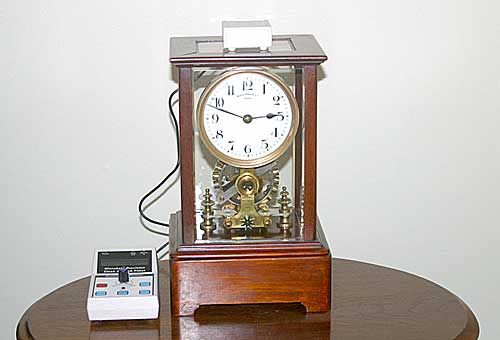|
Measuring Clocks and Watches
Inductive Sensors Pros
Cons
The last type of sensor that we make is inductive. It’s made with a coil of very fine wire. Any moving magnetic field in the vicinity of this coil will cause a current to flow in it, and this current will trigger the timer. The primary use of this sensor is the measurement of tuning fork watches like Accutrons. It’s also used to measure the motor impulse of analog quartz watches. But it can also be used to measure electric clocks. Any time an electric clock gets an impulse, a burst of magnetic energy is generated and can be picked up by this coil. The coil doesn’t even need to be very close to the clock. You can fasten it to the glass door with a suction cup. An inductive sensor is especially handy for measuring the rate of small electric clocks like Brillie, Bulle, and Eureka. You don’t have to open them or take them off the wall. This picture shows an inductive sensor sitting on top of a Eureka clock.
Using an inductive sensor to measure an electric clock is very convenient, but it’s not always accurate. The instant at which an electric clock triggers its coils can be erratic in some clocks. This has proven to be true for Synchronomes, for example. Though the free pendulum is very accurate, the mechanism that resets the gravity arm is not very precise.
|
